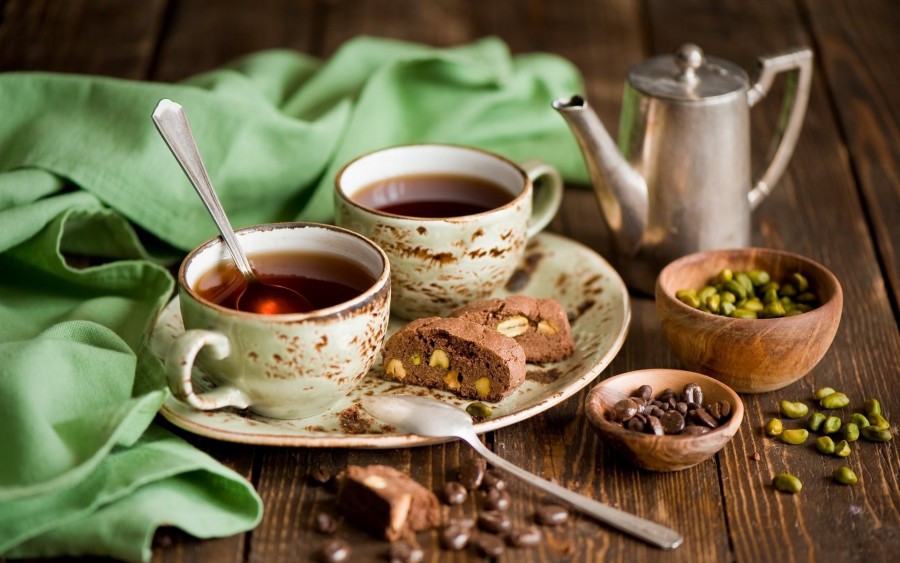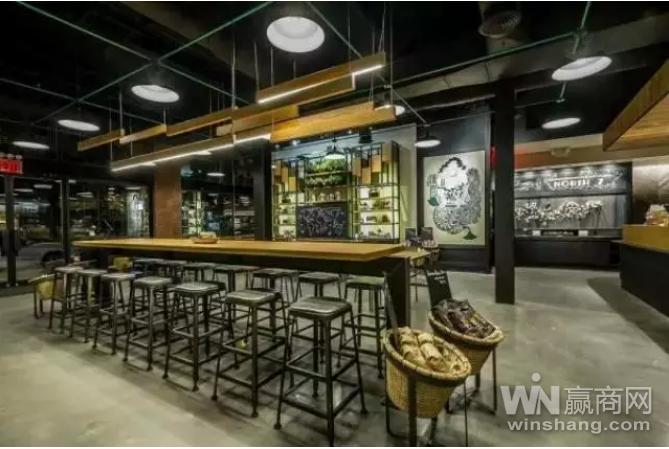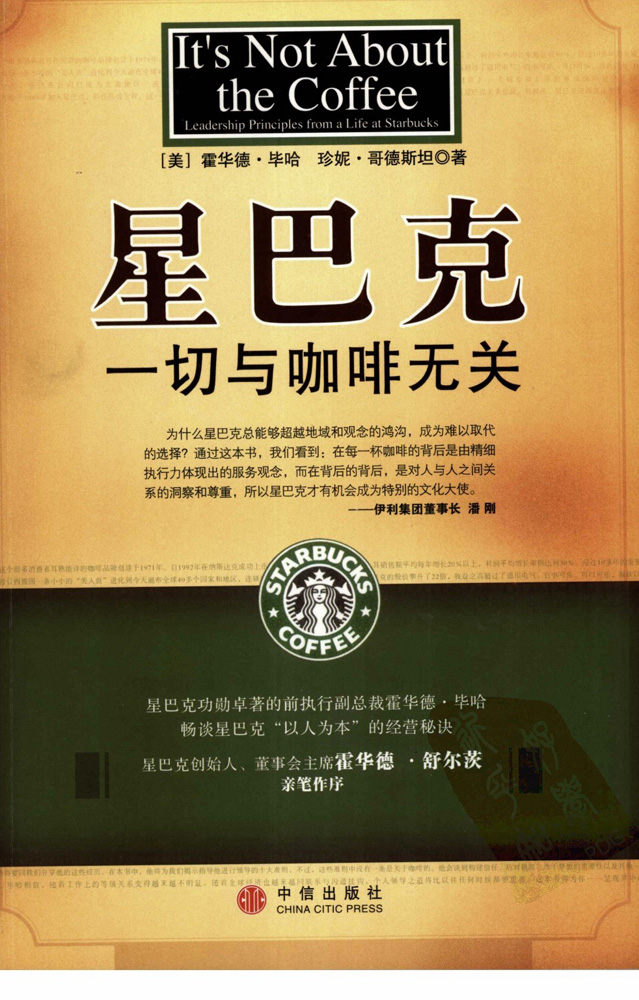Business giants compete to enter: "tea" countries set off a battle for coffee market
In January 2014, Tianjin GouBuLi Group announced that it had officially won the permanent use right of Australia's largest coffee chain Gloria in China, and the Chinese time-honored steamed stuffed bun shop officially crossed the border in the field of coffee. In February 2014, Coca-Cola spent 1.25 billion yuan to buy China's Green Mountain Coffee; in September, it launched its first espresso drink, Qiaoya, and Coca-Cola officially entered China's ready-to-drink coffee.

People's Daily, Beijing, September 17 (Peng Liang intern Wang Mingming) the hometown of tea is currently setting off a lively battle for the coffee market.
The protagonists who take part in the wrestling are business giants from all over the world.
Amazon recently launched an online cafe targeting the coffee market in mainland China. In fact, since last year, all kinds of enterprises have set their sights on the coffee market in mainland China. Coca-Cola is making ready-to-drink coffee Joya, KFC, McDonald's and other fast food giants have launched their own freshly ground coffee.
What these products have in common is that the price tends to be "close to the people".
Cheap coffee is becoming a new favorite. Business giants feel that the inexpensive coffee market in mainland China is full of potential and is a new nugget land worth the effort.
All kinds of giants have attacked many enterprises to get a piece of the pie.
Recently, Amazon has launched an online cafe targeting the Chinese coffee market. This is not the first time the e-commerce giant has explored the coffee industry in China. In April this year, JD.com injected 10 million yuan into 3W Coffee to promote the "Ten cities and 100 shops" project, which intends to expand 3W Coffee to 10 major cities.
It is not just the e-commerce giants who want to share the big cake of coffee.
In January 2014, Tianjin GouBuLi Group announced that it had officially won the permanent use right of Australia's largest coffee chain Gloria in China, and the Chinese time-honored steamed stuffed bun shop officially crossed the border in the field of coffee.
In February 2014, Coca-Cola spent 1.25 billion yuan to buy China's Green Mountain Coffee; in September, it launched its first espresso drink, Qiaoya, and Coca-Cola officially entered China's ready-to-drink coffee.
In October 2014, Haagen-Dazs began to offer free cappuccinos to all its members, quietly testing the coffee industry; in December, it launched a color latte with Illy Coffee, which is known as the "Italian national treasure"; in May 2015, Haagen-Dazs officially opened its first coffee shop in Shanghai, China, which officially sounded the clarion call to enter the coffee industry.
In March this year, instant noodle giant Shifu Kang also joined Starbucks to launch "Frappuccino" instant coffee in mainland China.
In addition to the above-mentioned enterprises, convenience store coffee that is popular in other countries and regions in mainland China has also appeared in first-tier cities one after another, such as the whole family's customers, Rosen's MACHI cafe, Coffee Coffee and other convenience stores selling freshly brewed coffee, with prices ranging from 7 yuan to 10 yuan. In addition, on the shelves of major supermarkets, "ready-to-drink coffee" increasingly occupies the shelves: unified first launched "Yaha", Yibao launched three years ago and now back on the shelves of "hot coffee", Pepsi teamed up with Suntory to launch "Liquor latte", Coca-Cola launched "Joya" and so on. The lowest price of coffee and ready-to-drink coffee in these convenience stores is about 5 yuan, which is worthy of the name of cheap coffee.
Compared with old-fashioned instant coffee, freshly brewed coffee is obviously more palatable. Compared with the current market pricing of freshly ground coffee such as Starbucks and costa, the price of low-priced coffee is obviously very competitive.
They have chosen the magic weapon of "parity" in selling coffee.
Interestingly, in the current fast consumer sector, various industries continue to increase pricing to launch high-end products, such as high-end water, high-end instant noodles, and so on, in order to rely on increasing unit profits to improve performance. But when it comes to selling coffee, the giants have unanimously chosen the traditional magic weapon: reducing the price of the unit.
For a time, all kinds of freshly ground coffee and ready-to-drink coffee attacked with the magic weapon of "parity" one after another.
Shanghai became the first city to sell freshly ground coffee in Shanghai in November 2014. by the end of the first quarter of this year, KFC had successfully served freshly ground coffee in 1300 restaurants in 10 Chinese cities. In 2015, KFC will launch freshly ground coffee series in 1000 restaurants in no less than 20 cities, according to he Yong, vice president of brand planning.
For such a cup of freshly ground coffee, consumers can choose from classic varieties such as American style, latte, mocha and cappuccino for 10 yuan. Although this is still a bit monotonous compared to traditional well-known coffee brands, KFC Coffee's small red cups are rapidly occupying the streets.
Su Jingshi, chairman and chief executive of Yum's China division, said he would continue to launch KFC's high-end coffee. The coffee is more than 40% cheaper than Starbucks and offers freshly ground coffee throughout the day. "by the end of 2015, KFC will launch this high-end coffee in 2500 restaurants," he said. "
McDonald's, another fast-food giant, introduced its own "McCoffee" to the Chinese market as early as 2009. McDonald's official said that although this time is fully 10 years later than Chinese mainland, McCoffee now has more than 800 stores in Starbucks, approaching the current number of Starbucks stores in China.
In terms of price, McCoffee is about half the price of Starbucks, COSTA and so on, easily staggering the competitive range with traditional coffee shops.
How big is the market for cheap coffee by the giants?
Coffee ranks first among the three largest drinks in the world, and it is also the second largest trading commodity in the world after oil. Behind the competitive layout is the rapid expansion of the coffee market in mainland China.
Although the growth rate of domestic instant coffee has dropped from double digits to single digits, in sharp contrast, the entire Chinese coffee consumption market is in a period of rapid growth.
According to Xinmin Weekly, global coffee bean sales are currently more than 8 million tons per year and are growing at an annual rate of 2%. China accounts for about 1x20 of the market sales. In 2014, China's coffee consumption reached more than 500000 tons, the market retail sales were close to 60 billion yuan, and China's coffee consumption increased by 15% per cent per year. Although China currently consumes 5 cups of coffee per capita, Japan and South Korea, which are also in East Asia, consume about 300 cups a year, while the world average is about 240 cups. At the same time, the huge population base makes China the most potential coffee consumer in the world.
At present, almost all the raw materials of coffee brands sold in China are made at home. Statistics from the Yunnan Coffee Industry Association show that Yunnan coffee production accounts for 98.8% of the country's total output, and Pu'er coffee production accounts for 57.8% of Yunnan's total output. At present, 70% of the coffee beans grown and processed in Pu'er are carved up by coffee giants such as Starbucks, Nestl é and Maxwell.
Foreign Coffee buys shelled coffee beans from Pu'er and then obtains roasted coffee beans through cooperation with local finishing plants.
"A cup of more than 300 milliliters of coffee generally requires only 5 grams of roasted beans, and the Italian coffee machine at both ends holds no more than 20 grams, so each cup is no more than 10 grams of coffee beans." According to the local coffee trader in Pu'er, based on the ex-factory price of 69 yuan per kilogram, the cost of five grams of coffee beans should be 0.345 yuan. "now the average price of each medium cup is 25 yuan, and one kilogram of coffee beans can be sold for 5000 yuan, and the ex-factory price is less than 70 yuan. even if you add in the costs of tax, transportation, manpower and store rent, the cost per kilogram of coffee beans should not exceed 200 yuan. We can see how big the profit margin of freshly ground coffee is.
With a big market and high profits, why should the giants ignore this treasure trove?
According to a previous report released by consulting firm Mintel, the market share of instant coffee, freshly ground coffee and ready-to-drink coffee is 71.8%, 10.1% and 18.1%, respectively. "although instant coffee continues to dominate China's coffee market, these two market segments are expected to gain more share as the freshly ground and ready-to-drink coffee markets grow more rapidly," the report said. "
Tang Shide, a retail partner in Greater China at the American management consulting firm Kearney, once commented: "five years ago, for most Chinese, coffee was a Nestle three-in-one." Today, American-style Starbucks, desktop "Shangdao Coffee" have sprung up in major cities, Korean-style "coffee to accompany you" and minority cafes of local literature and art are springing up like bamboo shoots after a spring rain. Chinese people began to drink coffee from instant to fresh grinding.
The situation has become, perhaps in the near future, the competition for affordable coffee will become white-hot. However, it is a good thing for consumers to be able to drink better coffee at a lower price.
Important Notice :
前街咖啡 FrontStreet Coffee has moved to new addredd:
FrontStreet Coffee Address: 315,Donghua East Road,GuangZhou
Tel:020 38364473
- Prev

Starbucks is not willing to just work as a coffee shop, have a late lunch or drink anything.
You may visit Starbucks more frequently in the future. starting with this, 75 stores in the United States will be the first to launch dinner menus, offering not only a variety of light snacks, but also drinks! In terms of drinks, a total of 11 options such as handmade beer, red wine, white wine and sparkling wine were added for dinner, while the menu included cheese platter and cold meat platter.
- Next

Starbucks: from Seattle to the World
Photo: Starbucks: nothing to do with Coffee 2 ○○ published by Citic Publishing House Starbucks, a coffee brand familiar to many consumers, was founded in 1971. Since its successful listing on NASDAQ in 1992, Starbucks has been operating by leaps and bounds, with sales growing at an average annual rate of more than 20%. After years of development, Starbucks has changed from the past
Related
- What brand of black coffee is the most authentic and delicious? what are the characteristics of the flavor of the authentic Rose Summer Black Coffee?
- Introduction to the principle and characteristics of the correct use of mocha pot A detailed course of mocha pot brewing coffee is described in five steps.
- Which is better, decaf or regular coffee? how is decaf made?
- How much is a bag of four cat coffee?
- How about four Cat Coffee or Nestle Coffee? why is it a cheap scam?
- Which is better, Yunnan four Cats Coffee or Nestle Coffee? How about cat coffee? is it a fake scam? why is it so cheap?
- How about Cat Coffee? what grade is a hoax? which instant coffee tastes better, four Cat Coffee, Nestle Coffee or G7 coffee?
- Process flow chart of coffee making-Starbucks coffee making process what coffee tastes good at Starbucks
- The top ten best coffee beans in the world Rose summer coffee or Tanzanian coffee tastes good
- Yunnan four cat coffee is good to drink?_four cat coffee is a big brand? four cat blue mountain coffee is fake?

